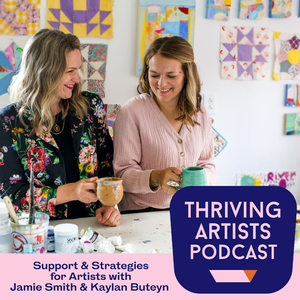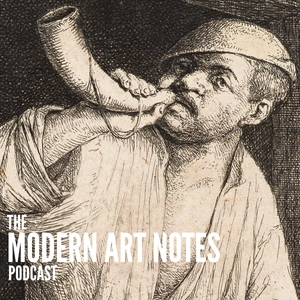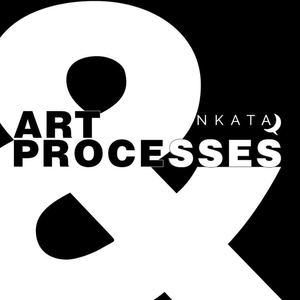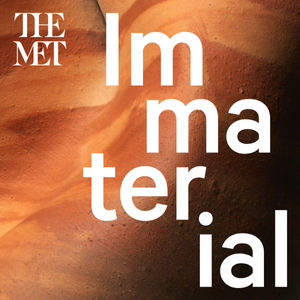
Clay
06/22/22 • 49 min
2 Listeners
In seventeenth-century Europe, some of the wealthiest women in the world were doing something strange with the ceramic jars in their curiosity cabinets. They were eating them. But these clay pieces from Mexico—called búcaros—weren't just some bizarre snack. They were seen as a piece of the “New World,” one you could touch, smell, and taste. They were so well known that they even made it into the foreground of masterpiece paintings. But what is the real story behind these jars? Who is preserving this centuries-old ceramic tradition, and what does it mean to be one of the few artists who still works with this specific, sensuous clay?
Guests:
Fernando Jimón Melchor, master ceramics artisan from Tonalà, Mexico
Federico Carò, research scientist, Scientific Research, The Metropolitan Museum of Art
Margaret Connors McQuade, Deputy Director & Curator of Decorative Arts, The Hispanic Society Museum & Library
Ronda Kasl, curator of Latin American Art, The American Wing, The Metropolitan Museum of Art
Jorge Cañizares-Esguerra, professor and historian of science and medicine at the University of Texas
Featured object:
Covered jar (Búcaros), ca. 1675–1700. Mexico, Tonalà. Earthenware, burnished, with white paint and silver leaf, 27 3/4 in. (70.5 cm). The Metropolitan Museum of Art, New York, Sansbury-Mills Fund, 2015 (2015.45.2a, b)
For a transcript of this episode and more information, visit metmuseum.org/immaterial
#MetImmaterial
Immaterial is produced by The Metropolitan Museum of Art and Magnificent Noise and hosted by Camile Dungy. This episode was produced by Eleanor Kagan and Ariana Martinez.
Translation, photos and field production by Fernando Hernandez Becerra of Esto no es radio.
Special thanks to Marie Clapot, Monika Bincsik, Sarah Cowan, Lam Thuy Vo, and ArtShack Brooklyn.
See omnystudio.com/listener for privacy information.
In seventeenth-century Europe, some of the wealthiest women in the world were doing something strange with the ceramic jars in their curiosity cabinets. They were eating them. But these clay pieces from Mexico—called búcaros—weren't just some bizarre snack. They were seen as a piece of the “New World,” one you could touch, smell, and taste. They were so well known that they even made it into the foreground of masterpiece paintings. But what is the real story behind these jars? Who is preserving this centuries-old ceramic tradition, and what does it mean to be one of the few artists who still works with this specific, sensuous clay?
Guests:
Fernando Jimón Melchor, master ceramics artisan from Tonalà, Mexico
Federico Carò, research scientist, Scientific Research, The Metropolitan Museum of Art
Margaret Connors McQuade, Deputy Director & Curator of Decorative Arts, The Hispanic Society Museum & Library
Ronda Kasl, curator of Latin American Art, The American Wing, The Metropolitan Museum of Art
Jorge Cañizares-Esguerra, professor and historian of science and medicine at the University of Texas
Featured object:
Covered jar (Búcaros), ca. 1675–1700. Mexico, Tonalà. Earthenware, burnished, with white paint and silver leaf, 27 3/4 in. (70.5 cm). The Metropolitan Museum of Art, New York, Sansbury-Mills Fund, 2015 (2015.45.2a, b)
For a transcript of this episode and more information, visit metmuseum.org/immaterial
#MetImmaterial
Immaterial is produced by The Metropolitan Museum of Art and Magnificent Noise and hosted by Camile Dungy. This episode was produced by Eleanor Kagan and Ariana Martinez.
Translation, photos and field production by Fernando Hernandez Becerra of Esto no es radio.
Special thanks to Marie Clapot, Monika Bincsik, Sarah Cowan, Lam Thuy Vo, and ArtShack Brooklyn.
See omnystudio.com/listener for privacy information.
Previous Episode
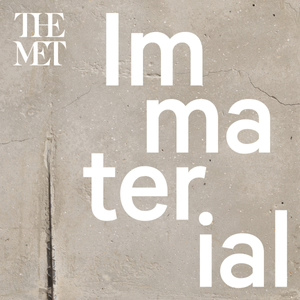
Concrete
Concrete is full of contradictions. First it’s dust, then liquid, then hard as stone. It’s both rough and smooth, it’s modern and ancient, it can preserve history or play a hand in destroying it. Unsurprisingly, concrete is all about the gray area. Hear about this material from its supporters and detractors alike: why it’s so controversial, why it’s so often used in memorials, and how Colombian artist Doris Salcedo uses it to address grief and mourning.
Guests:
Nadine M. Orenstein, Drue Heinz Curator in Charge, Drawings and Prints, The Metropolitan Museum of Art
Abraham Thomas, Daniel Brodsky Curator of Modern Architecture, Design, and Decorative Arts, Modern and Contemporary Art, The Metropolitan Museum of Art
Adrian Forty, professor of architectural history, University College London, and author of Concrete and Culture (2012)
Marco Leona, David H. Koch Scientist in Charge, Scientific Research, The Metropolitan Museum of Art
Iria Candela, Estrellita B. Brodsky Curator of Latin American Art, Modern and Contemporary Art, The Metropolitan Museum of Art
Featured object:
Doris Salcedo (Colombian, b. 1958), Untitled, 1997–99. Wood, concrete, and steel, 32 x 15 1/4 x 16 1/2 in. (81.3 x 38.7 x 41.9 cm). The Metropolitan Museum of Art, New York, Purchase, Lila Acheson Wallace Gift and Latin American Art Initiative Gift, 2020 (2020.25)
For a transcript of this episode and more information, visit metmuseum.org/immaterial
#MetImmaterial
Immaterial is produced by The Metropolitan Museum of Art and Magnificent Noise and hosted by Camile Dungy. This episode was produced by Eleanor Kagan.
Special thanks to Doris Salcedo, Laura Ubate, the San Francisco Museum of Modern Art, the Museum of Contemporary Art in Chicago, Harvard Art Museums, and the Nasher Sculpture Center.
Audio © President and Fellows of Harvard College. Recorded by Danny Hoshino on November 2, 2016, Harvard Art Museums
See omnystudio.com/listener for privacy information.
Next Episode
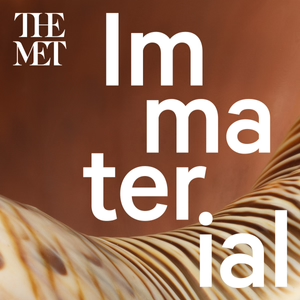
Shells
It all begins with a sea creature—a snail called a conch—and the mathematically perfect spiral it transforms into a home, which we humans then put to our lips and play like a trumpet. Throughout time and cultures, conch shells have been used to communicate across great distances, from signaling on the battlefield to connecting with the divine. Hear stories about a jazz musician who plays the conch to connect with his ancestors, why a sacred Incan site way up in the Andes became a ceremonial conch concert hall, and how a conch shell made its way from the depths of the ocean to echoing through the Great Hall of The Met.
Guests:
Bradley Strauchen-Scherer, curator, Musical Instruments, The Metropolitan Museum of Art
Markus Sesko, associate curator of Asian arms and armor, Arms and Armor, The Metropolitan Museum of Art
Steve Turre, master jazz trombonist and seashellist
Jim Waterman, founder and owner of Shell World
Miriam A. Kolar, scholar of archaeoacoustics and lead investigator for the Chavín de Huántar Archaeological Acoustics Project
Featured object:
Conch Shell Trumpet, late 19th century. Vanuatu, Melanesian. Conch shell, 12 x 6 in. (30.5 x 15.2 cm). The Metropolitan Museum of Art, New York, The Crosby Brown Collection of Musical Instruments, 1889 (89.4.772)
For a transcript of this episode and more information, visit metmuseum.org/immaterial
#MetImmaterial
Immaterial is produced by The Metropolitan Museum of Art and Magnificent Noise and hosted by Camile Dungy. This episode was produced by Elyse Blennerhassett.
Music in this episode performed and composed by Steve Turre, Lemon Guo, Sophia Shen, Elyse Blennerhassett, Austin Fisher, and Chris Zabriskie.
Shell recordings from Chavin provided by Miriam Kolar and performed by Miriam Kolar, Robert Silva, Ricardo Guerrero La Luna, Riemann Ramirez, Ronald San Miguel, and Tito La Rosa.
Special thanks to Tim Caster, Markus Sesko, John Guy, Maia Nuku, James Doyle, Julia Waterman, Paul Schneider, and Peter Rinaldi.
See omnystudio.com/listener for privacy information.
If you like this episode you’ll love
Episode Comments
Featured in these lists
Generate a badge
Get a badge for your website that links back to this episode
<a href="https://goodpods.com/podcasts/immaterial-5000-years-of-art-one-material-at-a-time-204702/clay-21563208"> <img src="https://storage.googleapis.com/goodpods-images-bucket/badges/generic-badge-1.svg" alt="listen to clay on goodpods" style="width: 225px" /> </a>
Copy
